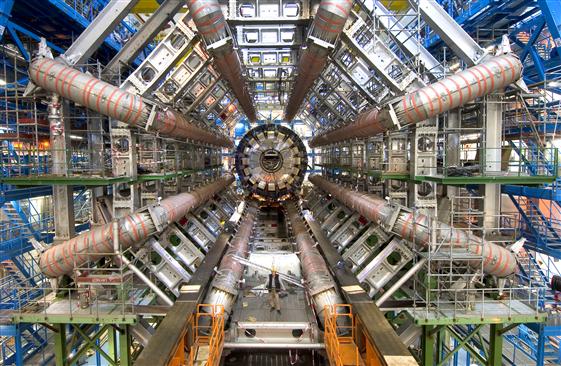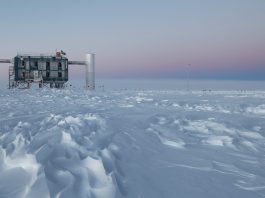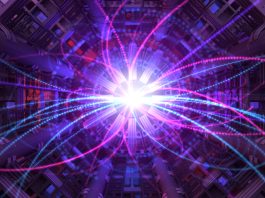The Innovation Platform spoke with CERN’s Katharine Leney to discuss the ATLAS Collaboration’s latest findings and their implications for both theoretical and experimental physics.
The Higgs boson is a central piece of the puzzle in particle physics that underpins our understanding of mass and the fundamental forces of the universe. Recent measurements released by the ATLAS collaboration offer deeper insights into this elusive particle, aiming to refine our understanding of its properties and interactions.
Understanding the Higgs boson enhances our grasp of the standard model of particle physics and opens pathways to exploring profound mysteries, such as dark matter, the matter-antimatter imbalance, and the very origins of the universe itself.
The Innovation Platform spoke with CERN’s Katharine Leney to discuss the latest findings and their implications for both theoretical and experimental physics.
Can you discuss the recent measurements released by the ATLAS collaboration and their significance?
CERN’s approach to understanding the Higgs boson involves comprehensive and highly accurate measurements of its properties and interactions. This diligence enables us to uncover any potential new physics that may exist. While new physics might not be directly detected, any new particles interacting with the Higgs boson would influence its behaviour, creating observable effects.
In our recent mass measurement, we successfully reduced the uncertainty involved. However, we continually face two main types of uncertainty that hinder perfect measurements.
The first is statistical uncertainty, which arises from the limited number of Higgs bosons produced in our data. The more Higgs bosons we observe, the closer we can get to determining their true value.
To illustrate, consider flipping a coin. If you flip it four times and get three heads and one tail, you cannot definitively conclude whether the coin is fair. However, if you were to flip it a million times, you would gain a much clearer understanding of its fairness. The second source of uncertainty comes from our knowledge of other measurements within the detector, affecting our final measurement’s overall accuracy.
In our latest Higgs mass measurement, we focused on the decay of the Higgs boson into two photons.
According to Einstein’s famous equation, \(E=mc^2\), mass and energy are fundamentally equivalent. Therefore, to accurately determine the mass of the Higgs boson, we must measure the energy of the particles it decays into, which our detector captures.
Extensive efforts have been undertaken to enhance the precision of our photon energy measurements in the calorimeters – sections of the detector where photons interact. By improving these measurements and reducing the associated uncertainties, we have significantly refined our mass measurement of the Higgs boson, effectively reducing the systematic component of uncertainty by a factor of four compared to our previous results.
Our entire project has focused on continuous improvements, particularly within our physics program. One example is how we have refined our methods for identifying particle sprays generated from the decay of beauty quarks, also known as bottom quarks. These processes are notoriously challenging, but we have made significant advancements, particularly by incorporating new machine-learning techniques. This has dramatically improved our ability to distinguish these particle sprays from others that do not originate from bottom quark decays.
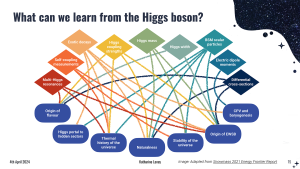
As a result, we have enhanced many of our analyses, allowing us to select more Higgs boson events while eliminating those that may resemble them but do not stem from bottom quark decays. This improvement is reflected throughout our suite of measurements and has positively impacted all our results. Ultimately, it contributes to a clearer and more comprehensive understanding of our research objectives.
Can you explain the Higgs boson and why its interactions are so interesting?
The Higgs boson is a unique particle in the standard model of particle physics. It is the only particle of its kind and plays a crucial role in the universe. Without the Higgs boson, nothing would possess mass, and the universe as we know it would not exist.
Studying the Higgs boson provides valuable insights that go beyond merely measuring a particle. For instance, it can shed light on the formation of the universe. In the moments following the Big Bang, everything was massless and chaotic. However, during a process known as electroweak symmetry breaking, the electromagnetic and weak forces separated. At this point, the Higgs boson came into existence and began interacting with other particles, giving them mass.
This interaction allowed for the formation of atoms, stars, galaxies, and eventually Earth. By measuring the Higgs boson with precision, we essentially access a portal to the early universe, which helps us understand how these fundamental processes evolved over time.
Currently, we lack a complete understanding of the events that took place just after the Big Bang. While we have theories and predictions about these events, they do not account for key phenomena such as the matter-antimatter asymmetry observed in the universe.
The existing theory makes some predictions about how this asymmetry arose, but these do not align well with other observations, particularly regarding why matter dominates over antimatter today.
Furthermore, we still do not have a clear understanding of dark matter and dark energy. However, it’s reasonable to consider that dark matter could gain its mass through interactions with the Higgs boson or with an undiscovered particle related to it. By investigating the properties of Higgs bosons, we may uncover the potential for new dark matter particles to interact with them.
This concept can be likened to dropping a pebble in a pond. You may not see the pebble itself, but you would notice the ripples, indicating that something happened. While we may not know exactly what lies beneath the surface, the effects can provide significant insights.
What is the significance of these findings for the field of particle physics and beyond?
We are reaching a point where various fields can utilise our insights about the Higgs boson, particularly cosmologists studying the early universe. One specific measurement we are focusing on is how the Higgs boson interacts with itself, as this could be crucial for enhancing our understanding of the formation and stability of the universe.
It is possible that our universe is not entirely stable, existing in a metastable state. In this context, it may appear stable to us, but there could be a deeper, more favourable state – a lower potential state – that is preferred. Transitioning to that state would require a process like quantum tunnelling. If such a transition were to occur, it would introduce the intriguing concept of vacuum decay.
This concept suggests that we could tunnel from our current state, which is a local minimum, to a deeper minimum. If this were to happen, the universe would essentially evaporate, leading to changes and breakdowns in the laws of physics as we know them. Our findings will help clarify which of these scenarios we actually inhabit.
Can you detail the updated analysis methods used and the specific techniques and technologies the ATLAS collaboration used to achieve such precise measurements?
For the Higgs mass measurement, attention has focused on improving the detection of photon energy. Significant progress has been made in refining our lower-level measurements of particle interactions, which enhances our ability to identify various particles, such as tau leptons, muons, and bottom quarks, with greater accuracy.
Another crucial area of improvement is our trigger system. The LHC experiences approximately 40 million proton-proton collisions per second. Given the overwhelming volume of data generated, it is impractical to record every collision. As a result, we must quickly determine which events are worth keeping and which should be discarded, reducing the number of recorded events from 40 million to a manageable thousand.
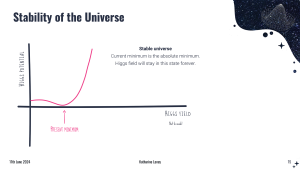
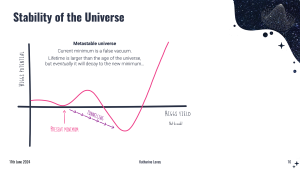
This step is critical, as any discarded event is permanently lost, impacting our future analyses. We run numerous machine learning algorithms in real-time within the detector and are investigating deploying neural networks in hardware to enhance our upgraded physics program.
In the final analysis stage, we continue to use machine learning to better differentiate Higgs events from similar-looking events that contribute to background noise. Machine learning is also being utilised to estimate backgrounds in previously challenging areas, allowing us to extrapolate data more effectively and accurately identify where Higgs boson events occur.
Are there any challenges associated with analysing data from previous runs?
The most recent suite of results is based on data collected during Run 2 of the Large Hadron Collider (LHC), which occurred from 2015 to 2018. Most of our findings stem from this data set, as it is significantly larger. The higher collision energy of the data used in this run means that we produced Higgs bosons at a higher rate than before. The Higgs boson was measured at 7 TeV in 2011, again at 8 TeV in 2012, and subsequently at 13 TeV with the data collected during Run 2. However, there comes a point when the effort required to combine different data sets outweighs the benefits, especially since we now have many more Higgs boson events.
On a human level, one of the greatest challenges we face is collaboration. With a team of 3,000 people, the experiments are so vast that no single individual or country can manage everything independently. This is why every person involved in the collaboration is credited as an author on each paper. It is impossible to isolate the contributions made in measuring the Higgs boson from the numerous upstream and downstream processes that facilitated that measurement.
From the beginning, we have maintained a dedicated shift crew in the control room that is available around the clock. If any issues arise, our experts are always on call and ready to respond, even at 4:00 AM, ensuring that problems are promptly addressed to maximise our data collection.
Additionally, considerable effort goes into processing this data, reconstructing results, and continually refining our methods. Coordinating these tasks and ensuring their successful execution is a remarkable achievement.
What future experiments or measurements are planned to investigate the properties of the Higgs boson further? How will the findings from this precision measurement guide future research directions?
We are currently in the third run of the Large Hadron Collider, which began in 2022 and is scheduled to conclude in mid-2026. This phase aims to produce a dataset approximately twice the size of our previous collection. Various improvements have been implemented throughout all stages of the project, and additional enhancements are planned to refine our measurements.
The ongoing advancements in particle detector technology are crucial as we approach the next phase of the LHC. In 2026, we will enter a long shutdown period to prepare for upgrades to all LHC experiments. Following this shutdown, the High-Luminosity LHC (HL-LHC) will commence operations in 2030.
Currently, the facility achieves around 60 simultaneous proton-proton collisions, but plans are underway to increase this number to 140 and eventually to 200. This escalation requires highly sophisticated detectors capable of accurately separating the resultant particle sprays from individual interactions.
A primary objective of this upgrade period is to achieve precise measurements of the Higgs boson’s self-interaction. More simultaneous collisions provide greater opportunities to observe interesting interactions; however, they also necessitate an increase in the rate at which we can read the data. Effectively disentangling particle origins and managing radiation exposure are critical challenges that must be addressed. The upcoming integration of high-luminosity upgrades aims to enhance data readout rates while maintaining robust event selection capabilities.
As a field, our goal is to define what we want to achieve, how to reach those goals, and how these strategies align with various constraints – namely, what is financially and technically feasible.
Currently, we are in the middle of a process called the European Strategy, which encompasses all of Europe and is similar to the US initiative, Snowmass. Through the European Strategy, we regularly update our projections regarding our capacity to measure key phenomena, particularly Higgs interactions, and use these to guide decisions about the future of our field. Gaining a deeper understanding of these interactions is vital as we work toward our objectives by the conclusion of the High-Luminosity LHC.
Our challenge is that recent advancements have rendered our previous projections outdated. We believe we can achieve significantly better results than expected, so revisiting these projections every few years is crucial.
The Future Circular Collider (FCC) is currently under discussion as a potential next step. This initiative would also be located at CERN, utilising the LHC. The current process involves a series of smaller accelerator chains feeding into the LHC itself, which acts as the final stage to reach the required high energy levels, much like the last leg of a relay race.
If the FCC project moves forward, it would consist of a ring approximately 100km in circumference, extending under Lake Geneva and almost reaching Annecy. This will undoubtedly be a massive undertaking, and we are now trying to understand what insights can be gained and how it would build upon the current work of the LHC.
Following the discovery of the Higgs boson, the critical question is how we can leverage this finding to search for new physics more directly. For example, we are investigating potential partners of the Higgs boson and have established a comprehensive search program focused on these heavier Higgs bosons. Additionally, we are exploring exotic decays of the Higgs itself, which could lead to the production of new particles. This approach is particularly relevant in the context of dark matter. We know that dark matter exists, and some of it has mass, indicating there are aspects in this area that we do not fully understand. By using the Higgs boson as a tool to probe for new physics, we can explore intriguing possibilities.
When the LHC was launched, the goal was to discover the Higgs boson. At that time, we didn’t know its mass, its appearance, or if there would be just one Higgs boson or multiple variants. The Standard Model suggested the existence of a single Higgs boson; however, we had many reasons to suspect that the Standard Model might not provide the entire picture. Consequently, we explored every possible avenue to locate the Higgs boson. Since its discovery, the search for additional Higgs bosons has remained active and continues to advance alongside our ongoing research efforts.
Please note, this article will also appear in the 20th edition of our quarterly publication.

